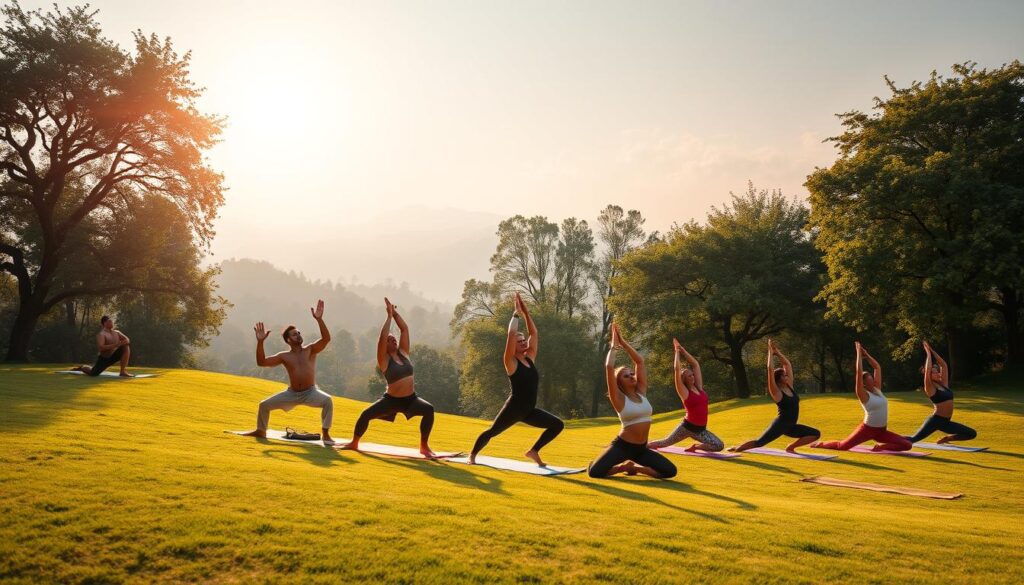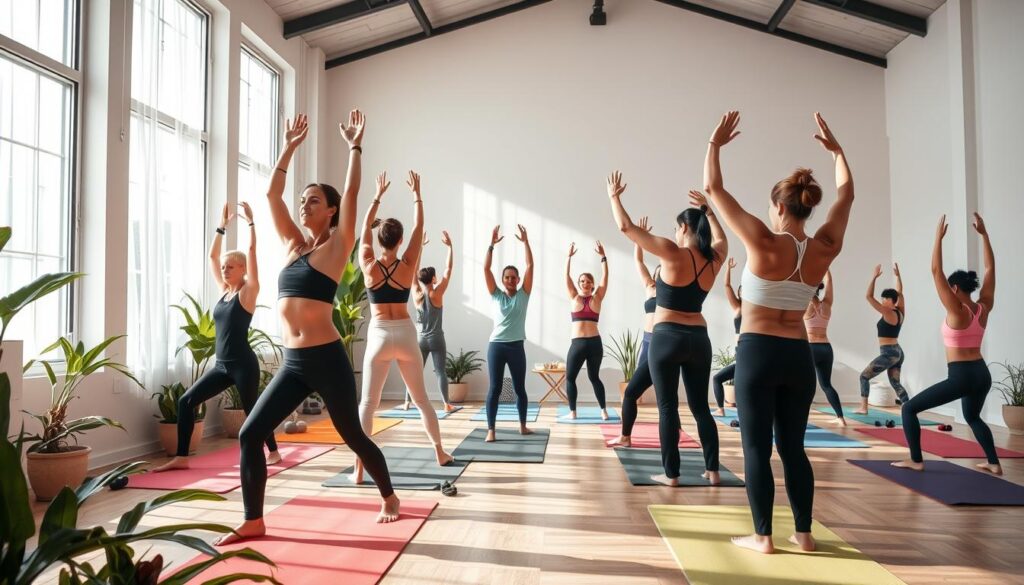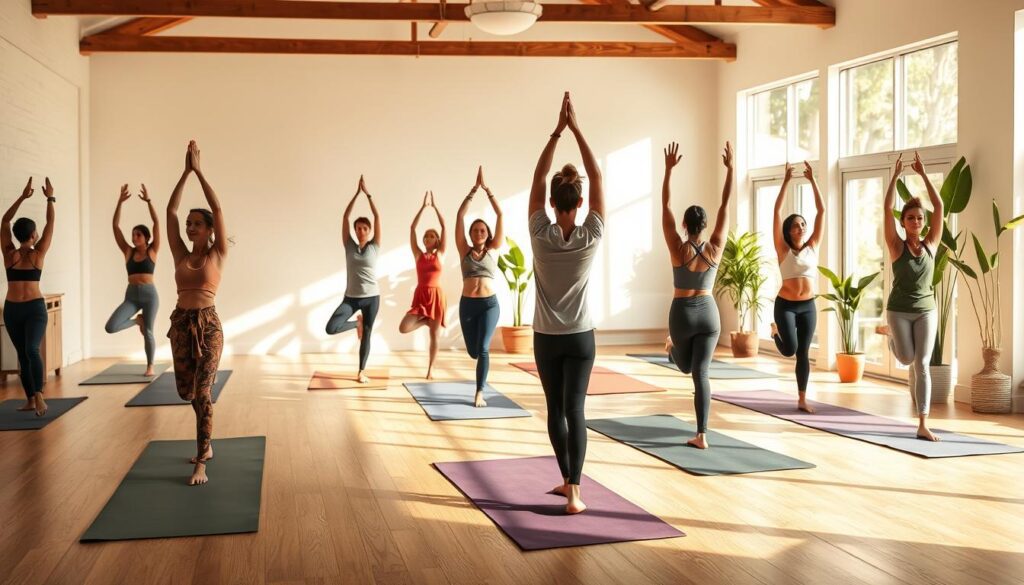Have you ever felt a sense of calm wash over you, even amidst life’s chaos? This profound sense of tranquility can often be a direct result of something as simple, yet powerful, as yoga. With over 20 million Americans embracing yoga as a sport, it has become a vital part of many lives. Each practice is a journey of connection—between the body and the mind, between inner acceptance and outward strength. Yoga is not merely a physical activity; it’s a transformative experience that promotes overall well-being and emotional resilience.
Regular yoga practice not only enhances your physical fitness but also fosters a deepened sense of self-awareness. Imagine stepping onto your mat and leaving behind the burdens of the day. As you breathe in, you’re welcoming new strength and clarity; as you exhale, you’re releasing stress and negativity. The mind-body connection cultivated in yoga is powerful—it’s about discovering who you are, embracing your limitations, and celebrating your progress. Yoga offers something unique; it is a safe haven for your spirit, a way to cope with life’s stresses, and a pathway to increased strength and flexibility.
Key Takeaways
- Yoga enhances both physical and mental health, contributing to overall well-being.
- Regular yoga practice promotes flexibility, balance, and strength.
- The mind-body connection cultivated in yoga can reduce stress and anxiety levels.
- Different styles of yoga cater to various personal goals and fitness levels.
- Yoga is accessible for everyone, requiring just a mat and a few minutes of time.
Understanding Yoga as a Sport
Yoga has a rich and expansive history that stretches back over 3,000 years, evolving into the diverse practice we see today. Initially outlined by Patanjali in the Yoga Sutras, yoga goes beyond mere physical postures, encompassing ethical principles and meditation. This ancient discipline has not only served to enhance physical well-being but has also transformed into a competitive sport known as Yoga Asana, where participants perform a series of poses in a routine that is evaluated by judges.
The History and Evolution of Yoga
The journey of yoga reflects its roots in ancient practices, where it was primarily focused on spiritual growth. Over time, as more individuals embraced yoga, various yoga approaches and methods emerged. Hatha yoga, for example, is a branch that emphasizes physical movements and postures. This style has grown dramatically in popularity, especially in athletic contexts, where thousands participate in events akin to dance or gymnastics competitions.
Classifying Yoga: Different Styles and Approaches
To fully understand yoga’s effect on physical and mental capabilities, it is essential to acknowledge the different styles of yoga available today. Hatha yoga promotes strength and balance, while more dynamic forms such as Vinyasa offer a flowing experience. With numerous styles available, practitioners can choose an approach that aligns with personal goals, whether it’s enhancing flexibility, core strength, or mental focus. Each style contributes uniquely to a well-rounded fitness routine, allowing athletes to prevent injuries and optimize performance through balanced muscle engagement and breath control.

Yoga for Fitness: Enhancing Physical Strength
Yoga serves as an exceptional method for enhancing physical strength and overall well-being. Engaging in yoga not only promotes overall muscle development but also fosters an environment for mental focus and emotional balance. The combination of various poses works to strengthen different muscle groups, making yoga for fitness a holistic practice that yields numerous benefits.
Building Muscular Strength through Yoga Poses
Building strength with yoga involves a range of poses, with some of the most effective being Plank and Warrior. These poses challenge multiple muscles, helping to cultivate endurance and stability. Strengthening the core is crucial in yoga, as students learn to control their movements. This increases both muscular strength and functional capacity, which translates well into daily activities and other fitness disciplines.
Flexibility and Balance: Key Benefits of a Regular Yoga Practice
Flexibility benefits abound in regular yoga practice. Poses like Tree Pose enhance balance while requiring significant core stability and leg strength. Beyond physical attributes, enhanced flexibility contributes to better posture and reduced risks of injury. Additionally, flexibility sets the stage for improved athletic performance across various sports. Overall, integrating yoga can lead to a more robust body, greater resilience, and enhanced quality of life.

Mental Health and the Mind-Body Connection
Yoga serves as an effective tool for improving mental health through its profound mind-body connection. Mindful breathing and focused postures create a pathway to enhance mental clarity and reduce distractions. This practice fosters a state where individuals can tap into their inner thoughts and feelings, allowing for improved focus in daily activities.
How Yoga Improves Mental Clarity and Focus
Engaging in yoga positively influences mental health benefits by enhancing cognitive functions such as clarity and concentration. Research supports that yoga practices can shift individuals from the sympathetic nervous system, responsible for the fight-or-flight response, to the parasympathetic system, which promotes relaxation. This shift leads to calmer thoughts and a greater capacity for sustained attention.
The Role of Yoga in Stress Reduction
Reducing stress with yoga presents tangible benefits for those experiencing anxiety and depression. Regular practice aids in managing these conditions by promoting relaxation responses that lower heart rates and cortisol levels. Techniques like Yoga Nidra and Savasana actively counterbalance the stresses of modern life, contributing to overall well-being. By participating in consistent yoga routine, individuals find relief from chronic stress and improve their quality of life.
Yoga as a Sport: Transforming Body and Mind
The integration of yoga into sports creates numerous holistic benefits of yoga, catering to the diverse needs of athletes. This practice enhances not only physical strength but also mental resilience, making it a comprehensive approach to fitness. Many athletes engage with yoga for improved flexibility and recovery, which are crucial for optimal performance. The increasing participation of both men and women in yoga underscores its relevance in modern sports culture.
The Holistic Benefits of Integrating Yoga into Sports
When athletes participate in yoga, they often experience a harmonious balance between body and mind. Over 50% of women choose yoga as a method for stress reduction, promoting better sleep and allowing for personal time amidst a busy schedule. This graceful form of exercise provides a unique alternative to traditional workouts, fostering a deeper connection with one’s body. For men, yoga serves as a solution for addressing tightness in areas such as the hamstrings and shoulders, significantly enhancing physical flexibility and overall comfort.
Research and Evidence Supporting Yoga’s Effectiveness
Research on yoga effectiveness reveals significant advantages for practitioners. Athletes frequently report increased concentration and reduced stress levels, essential components for success in competitive sports. Studies show that regular yoga can decrease inflammation and support cardiovascular health. The practice encourages mindfulness, allowing individuals to stay present and connected during demanding physical activities. These elements demonstrate how yoga transcends being just a workout; it becomes an integral part of an athlete’s holistic training routine.
Popular Yoga Poses and Their Benefits
Incorporating popular yoga poses into your routine can significantly enhance both physical strength and relaxation. Essential poses not only build muscle but also foster stability, making them indispensable components for anyone looking to improve strength with yoga. Regular practice of these poses can lead to increased overall body strength and balance while emphasizing mental clarity and focus.
Essential Poses for Strength and Stability
Key poses like Downward Dog, Warrior II, and Bridge Pose are excellent for improving strength with yoga. For instance, the Forearm Plank effectively tones the core and upper body, while Urdhva Dhanurasana energizes and works the entire body, focusing particularly on the arms, legs, abdomen, and spine. These poses engage multiple muscle groups, fostering a strong foundation for both athletic training and everyday activities.
Restorative Poses that Promote Relaxation
After a vigorous yoga session, restorative poses such as Child’s Pose, Legs-Up-the-Wall, and Corpse Pose can promote deep relaxation and recovery. These poses are crucial for lowering cortisol levels and facilitating better sleep patterns, helping to maintain a balanced lifestyle amidst the stresses of daily life. By regularly integrating these restorative techniques, practitioners can enjoy the full spectrum of benefits that yoga offers, supporting a holistic journey towards wellness.











